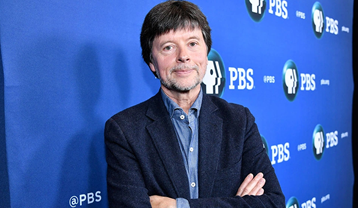Veteran’s Day Documentary - Part 3 - Ken Burns
To say that Ken Burns is a hero to me would be an understatement.
Just take a look at his collection of documentaries over the years, and you will see that he is probably one of the most significant historical filmmakers of all time. Getting his attention just a few years after we started producing documentaries at our school was a career highlight for me and a pretty unforgettable teaching moment for our students.
We had just finished our fourth documentary about local veterans. We decided to send copies to Florentine Films, the studio office of Mr. Burn's, located in the tiny town of Walpole, New Hampshire. I didn't expect a response, but then one afternoon the phone rang. On the other end was a very kind woman named Pam Tubridy Baucom, a producer working with Ken Burns. She had received the videos and watched them along with Ken Burns and his staff!
Not only did they love the work our students produced, but Ken wanted to talk with them about their accomplishments and share some advice. What followed was an hour-long phone conference with Ken Burns and our 2006 graduating class of video-journalism students. Keep in mind this was pre-Skype, and if I remember correctly, the set of videos we mailed to Ken Burns were on VHS...that's a big tape cassette that goes into a giant device known as a VCR.
What I remember most from the phone conversation was the excitement in his voice to be talking to a group of young filmmakers. Burns himself found his passion for documentary producing at a very young age. He pursued his dreams at Hampshire College in western Massachusetts. He encouraged the students to forge their path in the industry and figure out their passions.
Burns went on to comment on the films produced by our students. He shared that his film style includes four parts video and four parts audio in every production, and he found those same elements in our documentaries. As a teacher, this was very encouraging and confirmed that we were producing films on a professional level.
The documentary video should consist of four visual elements, which include interviews, photos, archival film, and printed documents. When possible, film a subject with multiple camera angles to provide fluid edits and provide close up shots for more emotional aspects of the story. Archival materials come from the subject being filmed, local museums and heritage societies. For national and global archives, there are many resources such as the Library of Congress digital archives and Getty Images.
The audio for a production should include 1st person interviews, narration, music, and sound effects. The subtle elements of sound effects such as soldiers walking, wind whipping across a battlefield, and airplanes in the distance help tell the story in greater detail. The documentary is half audio, so it is essential to invest just as much time into developing it as you do the video shown in the production.
Meet the Author, Tom Wilson
Tom Wilson is the coordinator of district media and video-journalism at Hoover High School in North Canton Ohio. You can follow the work of his students on social media @nctvmedia and his unique production vehicle, the Mobile Storyteller Project.



